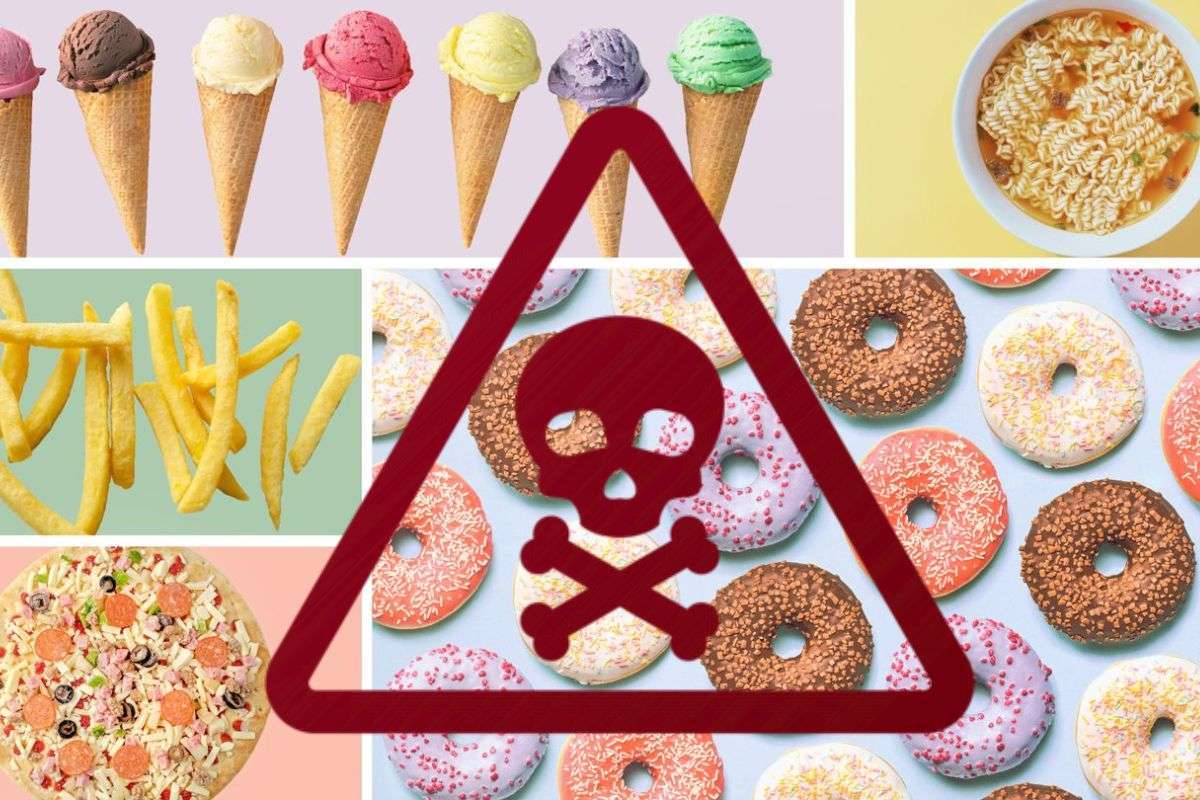Beware, Young Folks: Deadly Cancer is Targeting You!
Gen X and Millennials: Facing an Alarming Surge in 17 Cancer Risks.

A new study undertaken by researchers at the American Cancer Society discovered that Generation X (Gen X) and millennials are more likely than previous generations to get 17 types of cancers. Notably, those 17 include gastric cardia, small intestine, oestrogen receptor-positive breast, ovary, liver, and intrahepatic bile duct in women, non-HPV-associated oral and pharynx cancers in women, anus, colon and rectal, uterine corpus, gallbladder and other biliary, kidney and renal pelvis, pancreas, myeloma, non-cardia gastric, testis, leukaemia, and, in men, Kaposi sarcoma, which affects the lining of blood vessels and lymph vessels.
The researchers discovered that obesity is linked to 10 of the 17 that are becoming more common in younger birth cohorts. The researchers also discovered that death rates increased in increasingly younger generations, as did the incidence rates of liver cancer in women, uterine corpus, gallbladder, testicular, colon, and rectal cancer.
According to a Financial Times analysis of data from the Institute for Health Metrics and Evaluation at the University of Washington School of Medicine, published last year, cancer rates in the G20 group of industrialised nations have risen faster for 25- to 29-year-olds than for any other age group over the last three decades, by 22% between 1990 and 2019. Rates for 20- to 34-year-olds in these nations have reached their highest level in 30 years. In contrast, incidences in older age groups (those over 75) have decreased since their peak in about 2005.
Talking about the Indian context, how are different parameters responsible for the rise of cancer among younger generations?
Food, Lifestyle and Obesity- The well-known silent killers.
Researchers offer a less definite explanation for why people in their prime appear to be significantly more susceptible to cancers than previous generations. Scientists looking for answers are increasingly convinced that changes in nutrition and lifestyle that began in the middle of the past century hold at least part of the solution.
Since 1990, the majority of the rise in early-onset cancers has been in breast, colon, esophageal, kidney, liver, and pancreatic cancer. Eight of the 14 cancers on the increase are digestive system-related. For example, between 1990 and 2019, colorectal cancer rates climbed by 70% among those aged 15 to 39 in G20 countries. Increasing research suggests that consuming ultra-processed meals, especially those rich in saturated fat and sugar, is one of the probable causes of compromised gut health.

The core issue is that the food we consume is frequently severely processed while remaining economical, simple, long-lasting, and pleasing to our taste senses. However, it is virtually probably hazardous for our health. And this is increasingly true for children. Highly processed foods such as processed breakfast cereals, processed shop bread, ready dinners, frozen pizzas, processed supermarket sandwiches, and processed cookies, doughnuts, and chocolates have become staples.
India’s ultra-processed food sector has seen explosive growth, One of the highest rates globally, from 2011 to 2021. In 2011, ultra-processed foods accounted for 43% of total processed food retail sales, rising to 36% by 2021. The expected percentage is 39% by 2032. Ultra-processed foods have varying sizes and growth rates across five major groups. Chocolate and sugar confectionery had the highest retail sales value between 2011 and 2021, followed by ready-made and convenience foods. In 2019, beverages ranked third, but by 2021, salty snacks had risen to third place.
In 2021, sweet biscuits dominated the chocolate and sugar confectionery sector, accounting for nearly 43% of retail sales value. Consumers may be unaware of the detrimental effects of sugary biscuits. They are inexpensive, easy to store, have a long shelf life, and are commonly consumed as an impulsive snack. Still, if you do not believe in statistics, go to any supermarket around you, and you will see how the sector dominates the ultra-processed food market.
One prime example is the case of Bournvita, which has a high amount of sugar and was marketed and sold earlier as a health drink. Another case could be Nestle, which was charged with adding extra sugar to baby foods in certain countries.
Now, because of the increase in Ultra-processed foods, obesity is also on the rise, which is said to be another cause of cancer. Obesity may raise a person’s chance of developing specific cancers. Obese children tend to carry their weight into adulthood. That means that young individuals today have a greater cumulative lifetime exposure to body fat than previous generations. Excess body weight during young adulthood may raise the chance of developing certain cancers later in life. Excess body weight is a proven carcinogen associated with over a dozen cancers. However, it is unknown how fat may raise the risk of cancer, which requires further studies.

The dangerous lure of tobacco.
Tobacco remains “the primary cause of lung cancer,” and the disease may be substantially avoided by strong tobacco control laws and regulations. According to India’s Global Youth Tobacco Survey 2019, the prevalence of tobacco use among school-age children aged 13 to 15 is 8.4%. Surprisingly, the study results suggest that 11.4% of youngsters start smoking cigarettes before their seventh birthday, 17.2% start smoking bidi, and 24% start using smokeless tobacco products such as gutkha, khaini, and zarda. Although tobacco is not the only cause of lung cancer, the alarming rise in the use of tobacco is dangerous for the nation.
In addition, pollution and other airborne environmental exposures are likely to raise the incidence of lung cancer in many regions of the world. Efforts to promote clean air or limit exposure to airborne pollutants are also very essential to consider. This pathetic and urgent need for clean air can be noticed by the fact that Delhi was the world’s most polluted capital city in 2023. This shows how young Indians who daily commute to offices are exposed to detrimental air pollutants, which, in turn, could be one of the probable causes of cancer.
The demographic cohort.
Women now have fewer children, and at a later age, thus they spend less time breastfeeding than prior generations. Having a bigger family, which often results in a lengthier duration of breastfeeding, and giving birth for the first time at a young age are both known to provide protection against breast cancer. These modifications offer numerous benefits for women but also put them at a higher risk of breast cancer.
So what can be the probable solutions to these problems?
The growth in early-onset cancer is more than just an issue for healthcare systems. It also causes economic problems. According to studies, those who survive the disease are more likely to have long-term diseases such as infertility, cardiovascular disease, and secondary cancers, potentially increasing future healthcare costs. If the cancer tendency continues to get younger under prey, the economic cost will be even larger since we are losing individuals of working age who can contribute to growth. Cancer survivors may not be able to regain their prior production levels. “As a result, it will lower both quantity and quality of labour.
India, being advantaged by the demographic dividend, needs to be cautious as the people who are supposed to contribute to the economy and growth of the nation are not supposed to come under the umbrella of cancer and other life-threatening diseases.
Economic Survey 2024 also highlighted the increase in screen time and sedentary habits. According to the survey, India’s working-age population requires skills and good health in order to be gainfully employed. However, social media, screen time, sedentary habits, and unhealthy food are a lethal combination that can undermine public health and productivity, as well as India’s economic potential.
This increase in cancer incidence among young people will continue unless strong efforts and leadership are taken to ensure that populations enjoy longer, healthier lives. This should include healthy food alternatives in the market and make people literate about the product and their ingredients. Mr Revant Himatsingha, popularly known as the ‘food Pharmer’, has taken the initiative of calling companies against their deceptive marketing practices and making India literate about reading food labels and choosing healthier alternatives.

Also, many times, doctors, while diagnosing patients in their 20s and 30s, do not consider advising them for a cancer test, thinking that this age is not the case for cancer patients. So, some healthcare professionals think that it is equally important to note that cancers frequently progress to a more advanced state in younger people before being discovered. They believe doctors should be on the lookout for cancer among people in their twenties or thirties, realising that this is no longer an unlikely scenario. On the other hand, citizens should be aware and teach themselves about the symptoms of an incoming cancer.
Social media is filled with pieces of advice on ‘how to spot red flags in relationships’; following the trend, medical professionals, through their social media accounts, can teach their audiences about the ‘red flags’ of cancers and other diseases. In the end, if we want to beat the cancer and want to save our generation from this monster ‘cancer’, then a collective approach by the medical professionals, politicians and we as citizens need to be adopted, or we will lose the game to cancer. Take the call before it’s too late!




